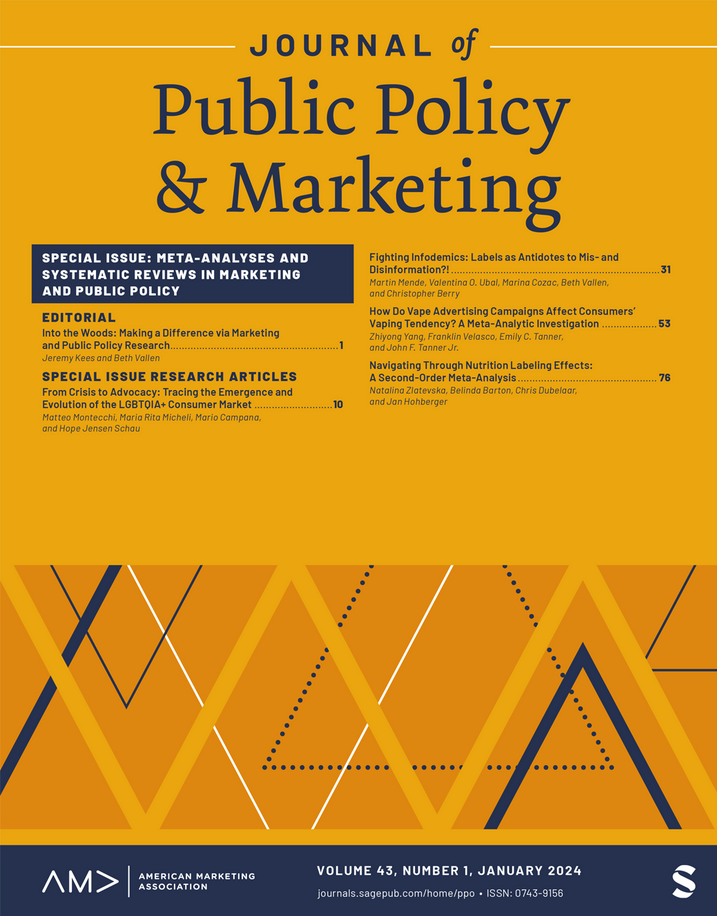随机场实验的治疗效果异质性:方法比较与公共政策启示
IF 4.7
3区 管理学
Q1 BUSINESS
引用次数: 2
摘要
许多公共政策研究(Martin and Scott 2020)使用随机现场实验得出因果结论(例如,Chen et al. 2020)。一个典型的随机现场实验包括一个对照组和一个治疗组,其中个体单位(如消费者、患者)被随机分配,之后在治疗组实施干预。干预可以是一项营销计划,只有治疗组的单位才会接触到。为了评估干预的有效性,研究人员通常估计平均治疗效果,计算结果为治疗组和对照组单位之间的平均差异。在应用随机化实验结果时,假设所有分配到处理条件的单元在操纵条件下的处理效果是相同的。但情况并非总是如此,因为在同一种治疗方法中,子组的效果可能不同(子组差异)。本文章由计算机程序翻译,如有差异,请以英文原文为准。
Treatment Effect Heterogeneity in Randomized Field Experiments: A Methodological Comparison and Public Policy Implications
Many public-policy studies (Martin and Scott 2020) use randomized field experiments for drawing causal conclusions (e.g., Chen et al. 2020). A typical randomized field experiment involves a control group and a treatment group to which individual units (e.g., consumers, patients) are randomly assigned, after which an intervention is implemented in the treatment group. An intervention could be a marketing program to which only units in the treatment group are exposed. To assess the intervention's efficacy, researchers typically estimate the average treatment effect computed as the mean difference in the outcome between the units in the treatment group and the control group. When applying the results of a randomized experiment, it is assumed that the treatment effect within the manipulated condition is the same for all the units assigned to the treatment condition. This may not always be the case, as the effect may differ for subgroups within a treatment (subgroup differences).
求助全文
通过发布文献求助,成功后即可免费获取论文全文。
去求助
来源期刊

Journal of Public Policy & Marketing
BUSINESS-
CiteScore
10.20
自引率
15.40%
发文量
29
期刊介绍:
Journal of Public Policy & Marketing welcomes manuscripts from diverse disciplines to offer a range of perspectives. We encourage submissions from individuals with varied backgrounds, such as marketing, communications, economics, consumer affairs, law, public policy, sociology, psychology, anthropology, or philosophy. The journal prioritizes well-documented, well-reasoned, balanced, and relevant manuscripts, regardless of the author's field of expertise.
 求助内容:
求助内容: 应助结果提醒方式:
应助结果提醒方式:


